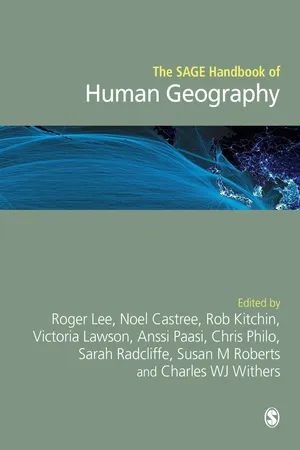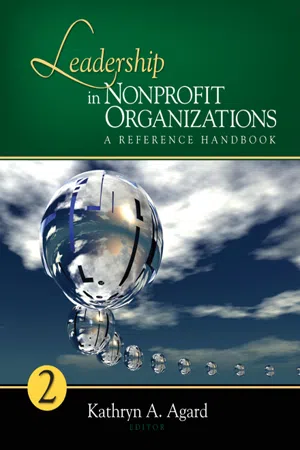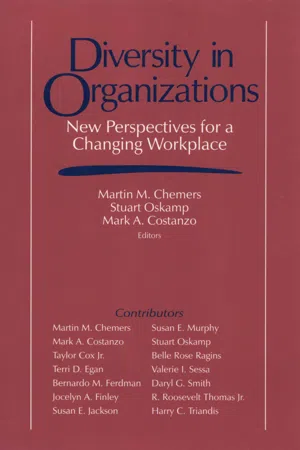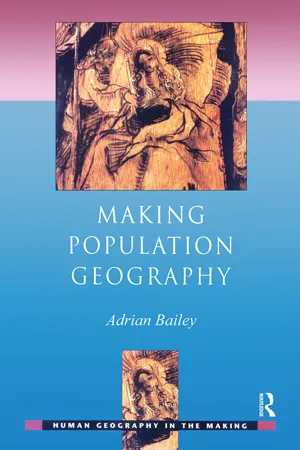Geography
Demographic Diversity
Demographic diversity refers to the variety of human characteristics and traits within a specific population or geographic area. This encompasses factors such as age, gender, ethnicity, race, religion, and socioeconomic status. Understanding demographic diversity is crucial for analyzing and addressing social, economic, and political issues within a given region.
Written by Perlego with AI-assistance
Related key terms
8 Key excerpts on "Demographic Diversity"
- eBook - ePub
- Roger Lee, Noel Castree, Rob Kitchin, Vicky Lawson, Anssi Paasi, Chris Philo, Sarah Radcliffe, Susan M. Roberts, Charles Withers(Authors)
- 2014(Publication Date)
- SAGE Publications Ltd(Publisher)
29 DemographiesElspeth GrahamDemography is an enormously powerful field. Its subject matter (fertility, mortality, migration, and population distribution) includes issues that are essential to social scientists who seek to understand how communities and societies function, to individuals and organisations (both public and private) who seek to change social conditions, and also to people simply interested in exploring issues that are central to their lives in society. (Riley and McCarthy, 2003: 3)The population geographer is concerned with three distinct and ascending levels of discourse: (1) the simple description of the location of population numbers and characteristics; (2) the explanation of the spatial configurations of these numbers and characteristics; and (3) the geographic analysis of population phenomena… (Zelinsky, 1966: 5–6)… a retheorized population geography must empirically and theoretically engage with the historical and contemporary disciplining and regulation of people and population through the management, administration, and control of space. (Tyner, 2009: 43)Introduction
The contemporary study that constitutes demographies is an interdisciplinary research field defined by its quest to understand, explain and predict population change. Like many areas of research, its boundaries are not strictly drawn and its potential scope is therefore extensive. Academics working in the field include demographers, economists, sociologists and social statisticians, as well as geographers, who publish their research in a wide range of population and disciplinary-specific journals. Many would question, perhaps even reject, the use of the term ‘demographies’ (in the plural) as a label for the knowledge they produce, considering it resonant of an epistemic pluralism they do not embrace. For others, concerned with the situatedness of knowledge production and circulation, ‘demographies’ will be preferred over singular labels that hint at hegemonic discourses denying the social embeddedness of research. This tension, as we shall see, is evident in the different approaches taken to the study of population change. - eBook - ePub
Leadership in Nonprofit Organizations
A Reference Handbook
- Kathryn A. Agard(Author)
- 2010(Publication Date)
- SAGE Publications, Inc(Publisher)
diversity is used quite frequently, but what do we really mean when we say diversity? How are we to know when we have achieved diversity? One way to define diversity is to divide it into demographic and functional diversity. Demographic Diversity refers to composition, such as having equal numbers of men and women or having populations from ethnic groups proportional to the served community. Functional diversity, on the other hand, is having a variety of voices and perspectives in the policy-making processes. Thus, one could be functionally diverse by accounting for multiple communities’ concerns without being demographically diverse; ideally the organization should have both types (Daley & Angulo, 1994).Another way to categorize diversity is by observable attributes and underlying attributes. Observable attributes are those that can usually be easily detected, such as race, gender, and age, whereas examples of underlying attributes are attitudes, values, and socioeconomic status (Brown, 2002). In a similar vein, one can assess diversity via primary versus secondary characteristics. Primary dimensions are associated with prominent identity factors including age, ethnicity, gender, mental/physical characteristics, race, and sexual orientation. In comparison, secondary dimensions can be education, family status, military experience, organizational role and level, religion, first language, geographic location, income, work experience, and work style (Frusti, Niesen, & Campion, 2003).Another type of diversity is cognitive diversity, which is evaluation of one’s educational experience. Consideration is given to nontraditional education, the continual practice of education in and outside of a person’s job field, and varied backgrounds in both for-profit and nonprofit organizations (Glasrud, 2003). Sometimes, a specific definition of diversity is not desired, but rather a general focus on diversity as difference is used. Difference can involve ethnicity, gender, sexual orientation, age, religion, class and economic status, parental status, or having a physical or mental challenge. Yet other differences can include private identities that vary such as recovering alcoholic or incest survivor (Delphi Consulting Group, 2007; Gitin, 2001). - eBook - ePub
Demographics
A Guide to Methods and Data Sources for Media, Business, and Government
- Steven H. Murdock, Chris Kelley, Jeffrey L. Jordan, Beverly Pecotte, Alvin Luedke(Authors)
- 2015(Publication Date)
- Routledge(Publisher)
Chapter 2 Basic Concepts, Definitions, and Geography of Demography As with any area of study, it is essential in demography to understand its basic concepts and the definitions of its key terms and to become familiar with the types of geographic areas for which demographic data are generally available. Knowing the jargon of demography and knowing the types of areas for which data can be obtained are essential first steps in knowing how to effectively use its data. In this chapter, we provide an overview of key concepts and definitions and examine the geographic bases used in demography and its applications. Basic Dimensions and Processes Given the definition of demography as the study of population size, distribution, and composition and of the processes that determine these, a logical place to begin in understanding demographic factors is to understand (1) what is meant by a population; (2) the three key dimensions of population–size, distribution, and composition; and (3) the three basic processes that determine population change–fertility, mortality, and migration. A population refers to the persons living in a specific area at a specific point in time. It refers to the aggregate, the group of people as a whole, in an area. As such, it has characteristics that are unique to an aggregate and are not just the sum of individuals’ traits or characteristics. For example, a population can have a death rate, birth rate, etc., but individuals are either alive or dead, have or have not been born. There is no death or birth “rate” for an individual - eBook - ePub
Culture and Diversity in the United States
So Many Ways to Be American
- Jack David Eller(Author)
- 2015(Publication Date)
- Routledge(Publisher)
Source: US Census Bureau. Geography DivisionNote: The full colour version of this map can be found on the companion website, www.routledge.com/cw/eller .Figure 12.4 Sex ratio (males to females) by county, 2010.Source: US Census Bureau. 2010 Census Briefs: Age and Sex CompositionNote: The full colour version of this map can be found on the companion website, www.routledge.com/cw/eller .It has already been noted that the units that we use to examine a geographic region have an influence on the results we get from our examination. At the national level, a certain statistical distribution of categories can be identified; however, at the regional or state or county or census tract level, other patterns appear. Further, as researchers agree, differences exist within areas (states, regions, etc.) just as commonalities link places across areas, and certainly the official or formal (e.g. political) boundaries on maps do not necessarily correspond to the contours of diversity across space.Probably the most common way to organize macro-level diversity within the United States is in terms of four geographical regions—Northeast, Midwest, South, and West. We have used this system in previous chapters . This is a very blunt division, though, and the US Energy Information Administration has suggested a subtler division with two or more subregions within each region, as portrayed in Figure 12.5 .But social and cultural variables cross-cut these geographic areas too, as the electoral map at the outset of the chapter illustrates, and these social/cultural characteristics do not necessarily respect international borders. This is why Joel Garreau proposed a model of regional diversity that treated all of North America as one great diversity system. “Forget about the borders dividing the United States, Canada, and Mexico, those pale barriers so thoroughly porous to money, immigrants, and ideas,” he wrote (1981: 1). Additionally, forget about “East and West, North and South, faint echoes of glorious pasts that never really existed save in sanitized textbooks” and about “the maze of state and provincial boundaries, those historical accidents and surveyor’s mistakes” (1). Instead, he offered a model of nine “nations” spread across three countries on one continent (see Figure 12.6 - eBook - ePub
Diversity in Organizations
New Perspectives for a Changing Workplace
- Martin M Chemers, Stuart Oskamp, Mark Constanzo(Authors)
- 1995(Publication Date)
- SAGE Publications, Inc(Publisher)
Based on lessons learned from demographic research, we conclude that the issue of demography is much more complex than suggested by most previous research. Demographic attributes are multiple and interdependent, with potentially differing results depending upon the level of analysis. In addition, organizations are dynamic social systems. Results from snapshot demographic research may be nonconclusive and nongeneralizable. Further, the preliminary results from this stream of research suggest that a demographic attribute may mean different things to different people and that its meaning may be affected by situational cues.In essence, demography is about the relationship between a particular context and the demographic elements within it. Similarly, diversity is about the experience of being different from others in a specific setting that has a particular set of social structural features. Therefore analysis of specific demographic effects or of organizational diversity issues in general must incorporate the influence of the context in situ. The organization and its associated cultural attributes represent a context variable that may be particularly relevant for understanding the dynamics of Demographic Diversity in organizations.We propose that the organization itself is a social category that comprises a set of unique cultural attributes conveying different meanings to different individuals. The organization as a cultural entity may be a source of social identity for some individuals. As a cultural entity, it may also modify the meaning or salience of other demographic attributes as well as the importance of these demographic patterns to individuals and groups. In the next section, we use the culture metaphor and two of the three perspectives proposed by Martin (1992) for analyzing an organization’s culture, to illustrate how analysis and understanding of demographic effects may change depending on the cultural manifestations of an organization.Understanding Demographic Diversity in Organizations: The Role of the Organization and Organizational CulturePolitical scientist Robert Presthus (1978) suggested that we now live in an “organizational society,” surrounded by organizations of all sorts. The employed population in particular spend two thirds of their waking hours in organizations. Organizations, however, are more than places where people work. For some people, organizations are a source of self-identity and emotional support. They are a “cultural phenomenon” in themselves, argued Morgan (1986)—“mini-societies that have their own distinctive patterns of culture and subculture” (p. 112). Martin (1992) elaborated further: - eBook - ePub
Running the Numbers: A Practical Guide to Regional Economic and Social Analysis: 2014
A Practical Guide to Regional Economic and Social Analysis
- John Quinterno(Author)
- 2014(Publication Date)
- Routledge(Publisher)
Source: U.S. Office of Management and Budget, “Update of Statistical Area Definitions and Establishments (OMB Bulletin No. 10–02),” December 1, 2009, http://www.whitehouse.gov/sites/default/files/omb/assets/bulletins/b10-02.pdf. Map prepared by William High.Map 5.1 Principal Cities and Component Counties of Seattle-Tacoma Bellevue, WA Metropolitan Statistical Area, 2009 DelineationDIFFERENTIATING DEMOGRAPHY AND DEMOGRAPHYWhile used interchangeably, the terms “demography” and “demographics” refer to distinct fields. Demography is the study “of the size, distribution, and composition of populations; the processes determining these—namely fertility, mortality, and migration; and the determinants and consequences of all of the above.”4 Central to the discipline is the use of quantitative methods to analyze populations and their characteristics as aggregate wholes.5 Demography contains two main branches. Formal demography , also called “pure demography” or “mathematical demography,” revolves around technical calculations of population measures. In contrast, social demography , which is synonymous with the terms “applied demography” and “population studies,” investigates the effects of demographic processes on nondemographic variables, like those related to economic life.6Despite being rooted in social demography, many regional analyses employ demography not in a strict, social scientific manner but in a broad way aimed at conveying “information and data on the size, geographic distribution, and characteristics of a population that affect its use of, its participation in, and/or its access to specific types of goods and services.”7 This wider, nontechnical approach, known as demographics - eBook - ePub
- Adrian Bailey(Author)
- 2014(Publication Date)
- Routledge(Publisher)
What was crucial to Trewartha was the idea that population geography was on the one hand special enough to deserve relatively high status in some subdisciplinary pecking order, but not so special as to undo the fundamentally unitary character of geography. Thus, the distinctiveness of this new field would be found in its ability to centre geography on human lives: The mixing of the conceptual and the political sat uncomfortably with a model of science ‘from nowhere’ where ‘facts speak for themselves’. However, this conviction would prove to be a harbinger of a constant thread of radicalism within the field that continues to the present in the form of debates about activism.The here-suggested trinomial organisation results in giving man his deservedly explicit and important position within the unitary geographic structure. The only final value is human life or human living, and this being the case it is difficult to understand why geographers should judge the creation of man, and the environment out of which he creates them, relatively more important than man himself …(Trewartha 1953 : italics in original)Trewartha’s system for population geography proceeds from a description of regional variations in population distributions. These variations are linked to demographic (fertility and mortality), environmental (ecumene) and cultural (settlement systems) attributes in a way that demonstrates continuity both with Hettner and the géographie humaine school. Indeed, it is apparent that the geography of population characteristics affects not only population growth mechanisms (for example, areas with early ages of marriage showed higher fertility), but also how people lead their daily lives as both producers and consumers (Pokshishevskiy 1962 - eBook - ePub
An Introduction to Population Geographies
Lives Across Space
- Holly R. Barcus, Keith Halfacree(Authors)
- 2017(Publication Date)
- Routledge(Publisher)
This presents an equally essentialist, conservative and fixed sense of the person—this time confined to stratified groups or classes. Instead, the present authors suggest a notion of population that transcends both the fixed individual (population) and the fixed group (populousness). It foregrounds more fluid roles for both socio-economic and bio-environmental context and individual personal character and agency in shaping a life. Population needs to center both postmodernism’s emphasis on diversity and post-structuralism’s critical sensitivity to the importance of categorization. A postmodern influence supports continued research on established Population Geography topics but studied more closely and with sharper sensitivity to the complexities of Sameness and Otherness 5 contained therein (Philo 1992), whilst post-structuralism destabilizes the stability or fixity of any category and thus promotes recognizing people through their lives as being frequently in motion between categories. Together, these twin emphases call for a new imagination that encompasses both recognizing people existing together within categories of the Same but also seeing people simultaneously distributed into an indeterminate variety of Others. Both geography and history are implicated strongly within this dynamic condition. For example, it varies across the globe but also appears to be increasing and accelerating within an “era of mobilities” (5.2). Population Geography thus breaks away from a focus on the fixed, Same, point of population (or populousness) (Curtis 2002) to encompass the fluid, Other, surface of populations. The call, in short, is for a thoroughly relational Population Geography. This presents who and what people are in relation, both to one another—understood to encompass a range of dimensions of positionality and scales— and to the spaces with which they are entangled and the times they live through
Learn about this page
Index pages curate the most relevant extracts from our library of academic textbooks. They’ve been created using an in-house natural language model (NLM), each adding context and meaning to key research topics.







